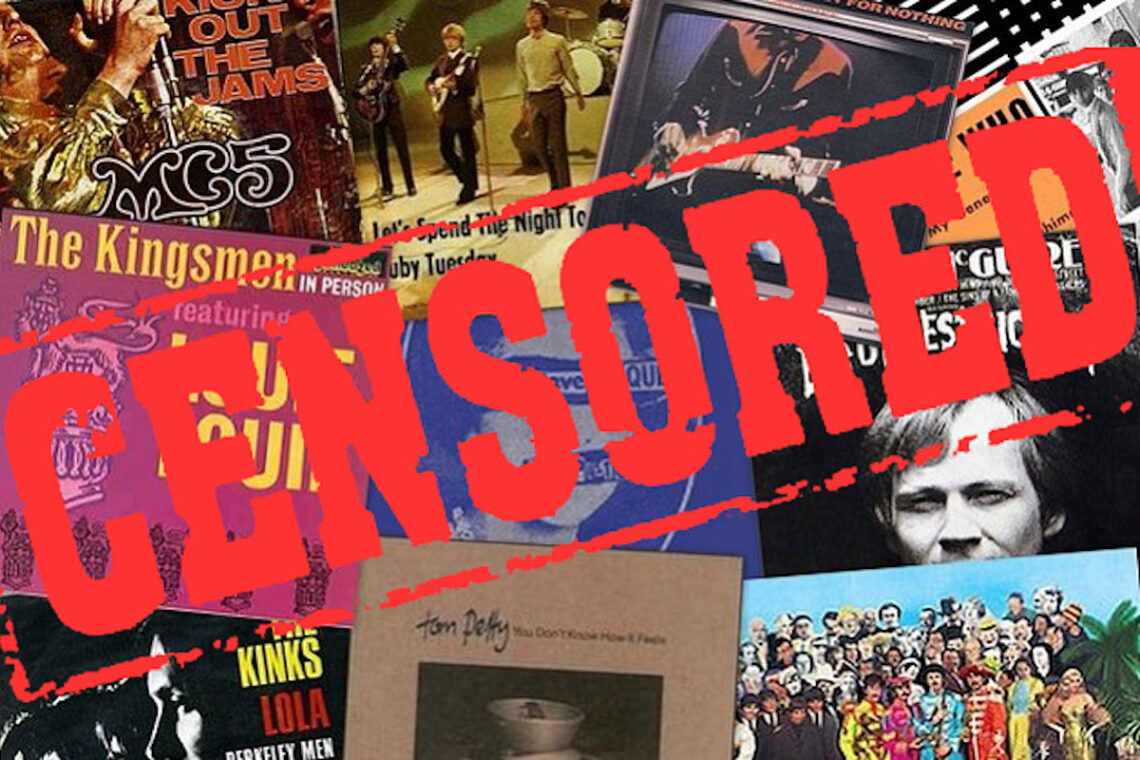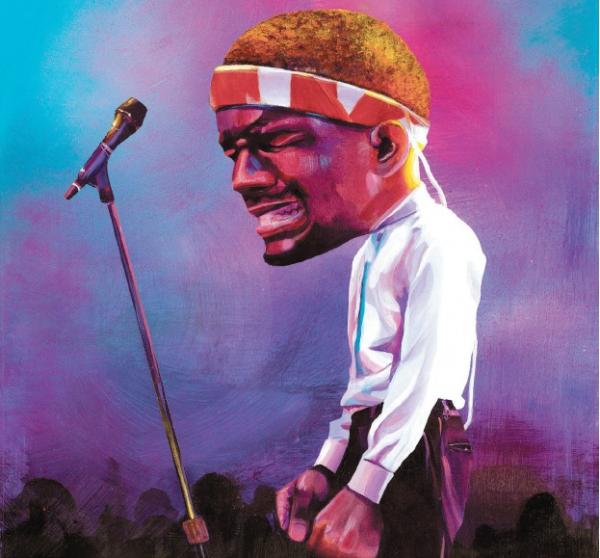
Art, Controversy and Censorship… How Influential are Artists?
“The discoverer of an art is not the best judge of the good or harm which will accrue to those who practice it……The introduction of a new kind of music must be shunned as imperiling the whole state; since styles of music are never disturbed without affecting the most important political institutions.”
– PLATO
Thousands of years before Lynne Cheney or Tipper Gore ever existed, Plato expressed his own concerns about the potential influence of artists. And there has been no shortage of leaders over the years who have shared and echoed these sentiments. In the nucleus of every art controversy lies the question: Does art change the world, or does art reflect the world? Is it the precursor, or the reactor?
Unless you’ve been living in a cave lately, you’ve undoubtedly heard plenty about Don Imus’s controversial remarks on his broadcast as well as the proposed ‘Hip Hop Clean-up’ that has been suggested to correct pop-cultural elements some say have helped inspire and condone such remarks in the first place. While I certainly don’t wish to compete with the professional punditry that has become a career livelihood for many would-be broadcasters, it seems to me that the Imus / Hip Hop controversy is only the most recent symptom of a much bigger question: Just how influential are we as artists?
Leaving the Imus debate as is – since most educated people already know where they stand on the topic – the Imus debacle is really an opportunity for artists to look at and appreciate the influence we have in shaping a society.
Modern art definitely owes a major debt – or at least an honorary MTV award – to Sigmund Freud. The impact of a scientific professional with heavy credentials making dark taboo subjects kosher for public discussion and expression was possibly the greatest bone ever to be thrown at the artistic community. Freud’s work changed society dramatically and naturally artists were first in line to explore – and exploit – the new subjects that were now considered “forward thinking” and “intellectual” to discuss.
Most modern artists don’t realize that it’s only been about 500 or so years since a creative emancipation permanently took hold on the establishment of secular music. I always like to imagine the religious leaders of the time as Lyndon Johnson figures, inundated with hippies, feminists and black panthers on their lawns, except dealing with rebellious long-haired troubadours singing about ghastly secular subjects like love, wine, adultery and cuckolding, not to mention artists who dared to paint landscapes simply for (perverse?) pleasure. (What great raves they must have thrown!)
In truth, however, secular music began to appear in the 12th and 13th centuries initially as a fun amalgam of workers’ songs to pass the time as well as the result of traveling French Nobles who hoped to gain attention and prestige. By the 14th century however, silly unrequited love songs had begun to evolve into a bonafide genre, planting the seeds to the modern rock industry. The invention of the printing press also helped things along by giving ordinary people access to perform music at home, paving the way to the current amateur invasion, American Idol and open mics everywhere.
Prior to and even during this time, the church functioned as a sort of creative and cultural dictator with an artistic monopoly that could determine what content could be painted, composed or written about, and artists were generally limited to religious or historical content. Even music and dance were regarded as 2nd class “supportive” mediums used primarily to accompany religious rituals or high government functions. And although there was always the occasional rich patron or monarch who commissioned non-religious work, artists still were deprived of full creative freedom, for even in those cases they were really just fulfilling the need for family heirlooms, which is not terribly different from a modern day work-for-hire or playing a wedding or Bat Mitzvah.
Musically speaking – before we ever evolved into media- frenzied debates regarding the justification of the word “ho” in the vernacular – there was a time not too long ago when the very notes, chords, keys and intervals composers used were actually very strictly monitored. The 3rd interval – now the most basic and essential unit of modern harmony – was still considered a forbidden fruit in the 13th Century. Renegade composers who dared compose with the hedonistic, forbidden chord did so only within secret societies who, according to legend, sometimes met in caves.
Fortunately, the Renaissance came along and lightened things up a bit as the flamboyant fashions, make-up and architecture began to cater to more decadent lifestyles, and music and dance became increasingly acceptable at non-religious social events. Music, however, still frequently took on a secondary role behind dance as a majority of the musical forms (Waltz, Minuet, Tarantella, and later Polka and Tango…) were created to accommodate popular dance steps.
In other art forms, controversy and censorship followed similar paths during and after the 16th century. What Abraham was to the Bible, Rembrandt to some degree was to painters, questioning existing systems and seeking his own answers along a road less traveled. Constantly broke from buying art to study independently, he was obsessed with fulfilling his full artistic potential and was the first artist to regularly paint self portraits. Once while mourning the loss of a beloved bird, Rembrandt stubbornly painted his deceased pet in the background of a painting for a rich patron and refused to remove it from the portrait despite the patron’s insistent protests. While not nearly as exciting as a “wardrobe malfunction” on national TV, this was quite a shocking departure from the obedient behavior of your average 17th century artiste.
Like Rock ‘n Roll centuries later, secular art and entertainment was here to stay. Still, certain conventions remained culturally forbidden. For example, the tritone, or “blue note” (an augmented 4th) kept its bad rap as “the devil’s note” well into the 20th century and caused Ragtime, Jazz and Blues critics to declare the whole genre “the devil’s music.” However (for the advanced music theorists in the room) – throughout the 18th and 19th centuries white European classical composers frequently used diminished chords which are essentially two overlapping tritones. Defenders of modern Hip Hop might argue – why were they not challenged for using the forbidden musical interval?
Billy Crystal once said, “The history of 20th century music is basically white kids wanting to be as cool as black kids.” From Elvis to Eminem, most commercial artists and their managers seemed to have figured this out as well. Perhaps that is the real essence of our modern controversies.
Historically, the aristocratic establishment has always felt threatened by the potential power of creative culture to change public attitudes over time. Dictators have always kept a tight leash on artists. The very first groups Hitler targeted, even before the Jews, were the artists and intellectuals, because they are always on the progressive forefront of keeping governments accountable with their respective platforms.
Ask yourself this: If MTV was regularly broadcast in Iran and its neighboring countries, would there be as many up and coming teenage terrorists-in-training with an entertaining medium distracting them in subtle yet powerful ways? And even if that meant an insipid marathon of Punk’d and Laguna Beach, would that really be such a bad thing compared to the alternative? If after-school music programs keep kids out of gangs, what is the primary difference in the Middle East, other than the fact that religion continues to dictate all forms of culture there?
Ultimately, for all the bad press artists get at times, it’s good to know we are appreciated and that there are still many positive examples of music and art making a difference. From Bob Hope entertaining the troops to Sarah McLachlan singing “Angel” to Sept. 11th and Hurricane Katrina survivors, our government leaders turn to us to restore morale, raise momentum (and money), and rally people for action.
From Bono (the heir apparent to John Lennon) and the Red Campaign, to Global concerts for the environment, to VH-1 Save the Music, MTV Rock the Vote, and whether you’re into it or not, the Christian Music movement……these are all powerful examples of the power of art to unite the masses in ways leaders could never achieve alone. Try watching both a live rock concert and a TV Evangelist speaking to a stadium on “mute” and you will see little difference in the visual and emotional content on the screen. And though no good deed goes unpunished (remember the plot to deport John Lennon, and Picasso’s visa denial the same year he painted the dove icon as the symbol of peace), most artists continually strive to make a difference with only modest demand for attention and little expected in return.
There will always be political leaders who masterfully unite to question our industry’s intentions – and sometimes rightly so. But the real question is – will members of our creative community unite just as masterfully to question theirs?




